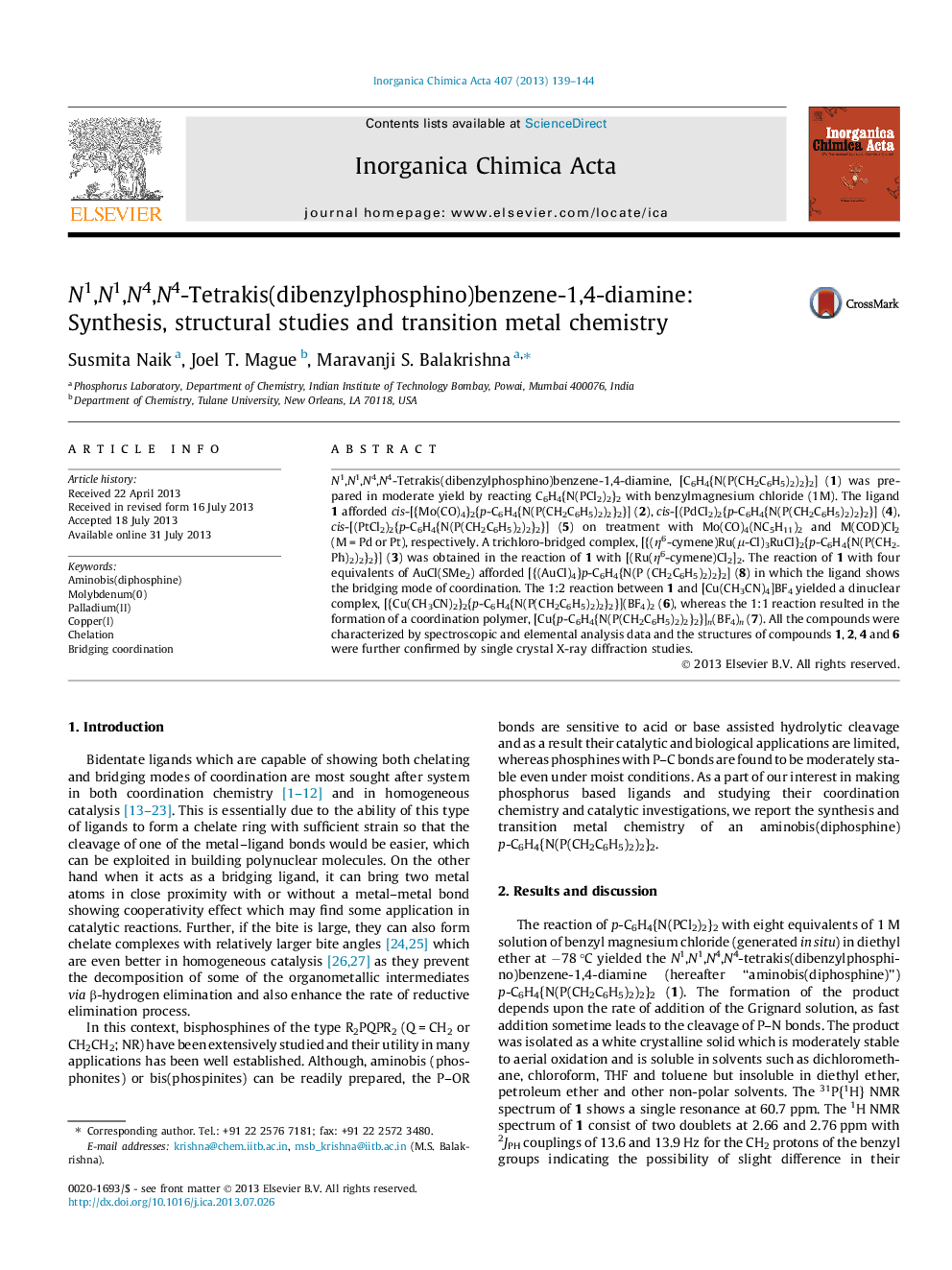| Article ID | Journal | Published Year | Pages | File Type |
|---|---|---|---|---|
| 1312264 | Inorganica Chimica Acta | 2013 | 6 Pages |
•A new bis(diphosphine) was prepared in good yield.•An ideal short-bite ligand to bring two metals in close proximity.•Exhibits both chelating and bridging modes of coordination.•May be useful in homogeneous catalysis.
N1,N1,N4,N4-Tetrakis(dibenzylphosphino)benzene-1,4-diamine, [C6H4{N(P(CH2C6H5)2)2}2] (1) was prepared in moderate yield by reacting C6H4{N(PCl2)2}2 with benzylmagnesium chloride (1M). The ligand 1 afforded cis-[{Mo(CO)4}2{p-C6H4{N(P(CH2C6H5)2)2}2}] (2), cis-[(PdCl2)2{p-C6H4{N(P(CH2C6H5)2)2}2}] (4), cis-[(PtCl2)2{p-C6H4{N(P(CH2C6H5)2)2}2}] (5) on treatment with Mo(CO)4(NC5H11)2 and M(COD)Cl2 (M = Pd or Pt), respectively. A trichloro-bridged complex, [{(η6-cymene)Ru(μ-Cl)3RuCl}2{p-C6H4{N(P(CH2Ph)2)2}2}] (3) was obtained in the reaction of 1 with [(Ru(η6-cymene)Cl2]2. The reaction of 1 with four equivalents of AuCl(SMe2) afforded [{(AuCl)4}p-C6H4{N(P (CH2C6H5)2)2}2] (8) in which the ligand shows the bridging mode of coordination. The 1:2 reaction between 1 and [Cu(CH3CN)4]BF4 yielded a dinuclear complex, [{Cu(CH3CN)2}2{p-C6H4{N(P(CH2C6H5)2)2}2}](BF4)2 (6), whereas the 1:1 reaction resulted in the formation of a coordination polymer, [Cu{p-C6H4{N(P(CH2C6H5)2)2}2}]n(BF4)n (7). All the compounds were characterized by spectroscopic and elemental analysis data and the structures of compounds 1, 2, 4 and 6 were further confirmed by single crystal X-ray diffraction studies.
Graphical abstractThe synthesis and transition metal complexes of aminobis(diphosphine), [C6H4{N(P(CH2C6H5)2)2}2] with benzylic substituents are described.Figure optionsDownload full-size imageDownload as PowerPoint slide
